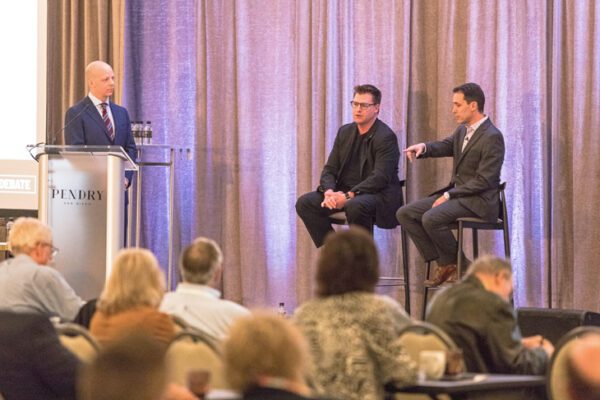The End of Wealth Inequality… Starting Today
- Economic inequality is a hot-button issue, especially when so many highly educated people are living paycheck to paycheck.
- Today, Alexander Green begins to clear up some common misconceptions and sets you on the path toward wealth creation.
Judging by my mailbag, last week’s column on economic inequality struck a chord with many readers – and a nerve with others.
I get that. How wealth is distributed in this country is a controversial subject – and a political hot potato.
Over the course of the next few columns, I’m going to clear up a few misperceptions on the matter.
Then I intend to embark on an audacious new mission.
I’m going to show you – exactly, specifically and concretely – how to end wealth inequality.
Or, at least, how to end the only wealth inequality that you can do something about – the gap between your current net worth and the one you’d like to have.
Trust me, this isn’t taught in high school or college. It isn’t even taught at Harvard Business School.
Think that’s a stretch? Think again.
In his book The Pledge: Your Master Plan for an Abundant Life, my colleague Mark Ford – writing under the pen name Michael Masterson – cited research by Tom Bay, author of Look Within or Do Without.
According to Bay, Harvard Business School did a study of the financial status of its students 10 years after graduation and found that…
- As many as 27% needed financial assistance.
- A whopping 60% of them were living paycheck to paycheck.
- A mere 10% were living comfortably.
- Only 3% were financially independent.
How can this be when we’re talking about some of the smartest and most capable men and women in the country?
Unfortunately, how to simply, safely and reliably build a personal fortune isn’t found in a book. If it were, it would be a perennial bestseller.
It isn’t taught in a classroom. If it were, that class would be oversubscribed every term.
In my view, effective wealth building can be faithfully revealed only by people who have been there – repeatedly.
And, even then, only after they have failed – repeatedly.
It may seem counterintuitive, but you have to understand what won’t work before you can fully commit to what will.
In Wednesday’s column, for instance, Mark Ford wrote about how a friend – his dentist – wanted to chuck everything to become a successful internet marketer.
The guy wasn’t following a plan. He was indulging a fantasy, one that would likely waste exactly what he couldn’t afford to lose – time, money and energy – and create nothing but frustration and disappointment.
Mark has set up and run dozens of companies in lots of different industries.
He knows what works. He knows what doesn’t. That kind of mentorship is priceless.
If you’re new to wealth creation and management, prepare to face a few daunting facts:
- Four out of five new businesses fail in the first five years.
- The average equity investor underperforms the S&P 500 by 600 basis points a year. (They take large risks to earn small returns.)
- Most fixed income investors earn negative real returns. (And this is after a 38-year bull market in bonds.)
Rather than absorbing a lot of painful and demoralizing lessons, it’s far better you learn from the mistakes of others, people who don’t mind talking about past failures… or showing you the shortest route to financial independence.
The tricky thing about building wealth is that there are only a few proven paths.
Yet there are countless roads that seem like they will get you there… but won’t.
Over the course of the next few columns, I’m going to explore exactly what works (and why) and what doesn’t (and why not) in wealth creation and management.
The goal? To end the only wealth gap that really matters.
Your own.
[adzerk-get-ad zone="245143" size="4"]About Alexander Green
Alexander Green is the Chief Investment Strategist of The Oxford Club, the world’s largest financial fellowship. For 16 years, Alex worked as an investment advisor, research analyst and portfolio manager on Wall Street. After developing his extensive knowledge and achieving financial independence, he retired at the age of 43.
Since then, he has been living “the second half of his life.” He runs The Oxford Communiqué, one of the most highly regarded publications in the industry. He also operates three fast-paced trading services: The Momentum Alert, The Insider Alert and Oxford Microcap Trader. In addition, he writes for Liberty Through Wealth, a free daily e-letter focused on financial freedom.
Alex is also the author of four New York Times bestselling books: The Gone Fishin’ Portfolio: Get Wise, Get Wealthy… and Get On With Your Life; The Secret of Shelter Island: Money and What Matters; Beyond Wealth: The Road Map to a Rich Life; and An Embarrassment of Riches: Tapping Into the World’s Greatest Legacy of Wealth.






